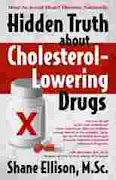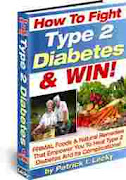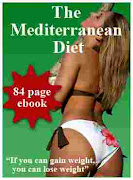Prevalence
An estimated 80,700,000 American adults (one in three) have one or more types of cardiovascular disease (CVD), of whom 38,200,000 are estimated to be age 60 or older. Except as noted, the estimates were extrapolated to the U.S. population in 2005 from NHANES (National Health and Nutrition Examination Survey1999–2004.
(Total CVD includes diseases in the bullet points below except for congenital CVD.) Due to overlap, it is not possible to add these conditions to arrive at a total. • High blood pressure (HBP)—73,000,000. (Defined as systolic pressure of 140 mm Hg or greater and/or diastolic pressure of 90 mm Hg or greater, taking antihypertensive medication or being told at least twice by a physician or other health professional that you have high blood pressure.)
• Coronary heart disease (CHD)—16,000,000.
• Myocardial infarction (MI, or heart attack)— 8,100,000.
• Angina pectoris (AP, or chest pain)—9,100,000.
• Heart failure (HF)—5,300,000.
• Stroke—5,800,000.
• Congenital cardiovascular defects—650,000– 1,300,000.
• The following prevalence estimates are for people age 18 and older from NCHS/NHIS, 2005:
(Vital Health Stat 10.2006[232]:1–153)
– Among whites only, 12.0 percent have heart disease, 6.6 percent have CHD, 21.0 percent
have hypertension and 2.3 percent have had a stroke.
– Among blacks, 10.2 percent have heart disease, 6.2 percent have CHD, 31.2 percent have
hypertension and 3.4 percent have had a stroke.
– Among Hispanics or Latinos, 8.3 percent have heart disease, 5.9 percent have CHD, 20.3
percent have hypertension and 2.2 percent have had a stroke.
– Among Asians, 6.7 percent have heart disease, 3.8 percent have CHD, 19.4 percent have
hypertension and 2.0 percent have had a stroke.
– Among Native Hawaiians or other Pacific
Islanders, 22.4 percent have hypertension (other prevalence estimates considered unreliable).
– Among American Indians or Alaska Natives, 13.0 percent have heart disease, 2.5 percent have
CHD, 25.5 percent have hypertension and 5.8 percent have had a stroke (estimate for HD may
be unreliable).
Incidence
• Based on the NHLBI’s (National Heart, Lung, and Blood Institute) Framingham Heart Study (FHS) (1980–2003)… (Hurst W. The Heart, Arteries and Veins.10th ed. New York, NY: McGraw-Hill; 2002)
– The average annual rates of first major cardiovascular events rise from three per 1,000 men at ages 35–44 to 74 per 1,000 at ages 85–94. For women, comparable rates occur 10 years later in life. The gap narrows with advancing age.
– Before age 75, a higher proportion of CVD events due to CHD occur in men than in women, and a higher proportion of events due to stoke occur in women than in men.
• Data from the FHS (Framingham Heart Study) indicate that the lifetime risk for CVD is two in three for men and more than one in two for women at age 40.
(Personal communication, Donald Lloyd-Jones, MD, Northwestern University, Chicago, Ill.)
Mortality
• Final mortality data show that CVD (I00–I99, Q20–Q28) as the underlying cause of death
(including congenital cardiovascular defects) accounted for 36.3 percent (869,724) of all
2,397,615 deaths in 2004, or one of every 2.8 deaths in the United States. CVD total mention deaths (1,357,000 deaths in 2004) accounted for about 57 percent of all deaths in 2004.
(NCHS, National Center for Health Statistics Compressed mortality file: underlying cause of death,1979 to 2004; http://wonder.cdc.gov/mortSQL.html)
• In every year since 1900, except 1918, CVD accounted for more deaths than any other single cause or group of causes of death in the United States.
• Nearly 2,400 Americans die of CVD each day, an average of one death every 37 seconds.CVD claims about as many lives each year as cancer, chronic lower respiratory diseases, accidents and diabetes mellitus combined.
• The 2004 overall death rate from CVD (I00–I99) was 288.0. The rates were 335.1 for white males and 454.0 for black males; 238.0 for white females and 333.6 for black females. From 1994–2004, death rates from CVD (ICD/10 I00– I99) declined 24.7 percent. In the same 10-year period, actual CVD deaths declined 8 percent.
• Other causes of death in 2004 (based on final mortality figures)—cancer, 553,888; accidents, 112,012; Alzheimer’s disease, 65,965; HIV (AIDS), 13,063
• Final 2004 CVD death rates were 341.7 for males and 245.3 for females. Cancer (malignant neoplasms) death rates were 227.7 for males and 157.4 for females. Breast cancer claimed the lives of 40,954 females in 2004; lung cancer claimed 68,461. Death rates for females were 24.4 for breast cancer and 41.6 for lung cancer.
One in 30 female deaths is from breast cancer, while one in six is from CHD. By comparison, one in 4.6 women die of cancer while one in 2.6 die of CVD. Based on 2004 mortality, CVD caused about a death a minute among females —more than 460,000 female lives in 2004. That’s more female lives than were claimed by cancer,
chronic lower respiratory diseases, Alzheimer’s disease, accidents and diabetes combined.
• More than 148,000 Americans killed by CVD (I00–I99) in 2004 were under age 65. In 2004, 32 percent of deaths from CVD occurred prematurely (i.e., before age 75, which is well below the average life expectancy of 77.9 years).
• According to the NCHS (National Center for Health Statistics), if all forms of major CVD were eliminated, life expectancy would rise by almost seven years. If all forms of cancer were eliminated, the gain would be three years. (U.S. Decennial Life Tables for 1989–91, Volume 1, No.4. Eliminating Certain Causes of Death, 1989–91. NCHS,September 1999.)
Heart Disease and Stroke Statistics — 2008 Update, American Heart Association




